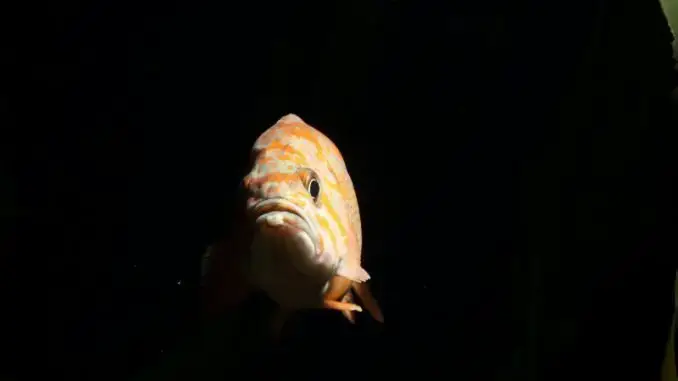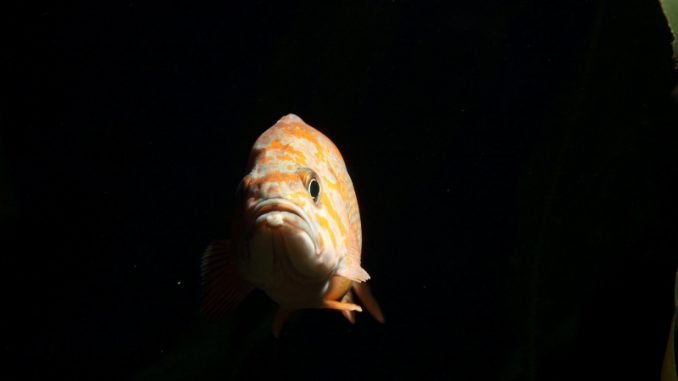
Have you ever wondered if fish can see at midnight? This is a typical question asked by both pet fish owners and fish fanatics. So it seems that there are some species of fish that have excellent nighttime vision and vision. But how does this affect their care needs? In this blog post, we'll tackle the question “Can fish see at midnight?” to find out what environment the one you love in the water should be in to feel comfortable and happy. We talk about the benefits of a low-light environment and provide tips on how to create an environment that will make your little swimmers feel at home.
Table of contents:
Can fish see in the dark?
A. How fish adapt to low, gentle conditions
Fish are well adapted to life in low light environments. Many species have distinctive visual variations that allow them to see better in dimly lit areas, such as: B. larger eyes and an increased number of photoreceptors. Some fish have a reflective layer on the back of their eye, called the tapetum lucidum, that helps them detect even weak sources of sunlight. In addition, some fish can change the size and type of their pupils to adapt to different sun depths.
B. Fish species that can see in the dark
Many species of freshwater and saltwater fish can see well even in dark environments due to their natural variations or because they reside near the ocean floor, where there may be much less light. Examples include cichlids, catfish, loaches, gobies, angelfish, eels and many more. Some deep-sea fish, such as lanternfish, also possess large eyes with an extreme density of photoreceptors, allowing them to search for food at depths that daylight would not reach.
C. Concepts for keeping fish in less protective environments
Finally, be careful with too many decorations as they may block too much ambient light from your aquarium, which could stress your fish if they cannot uncover a cover in daylight. You will need to set up plenty of hiding places to keep them feeling safe and maintain passable filtration and water quality parameters, as these areas can affect how much oxygen is available to your fish when they are unavailable. There is not enough light for photosynthesis of aquatic plants or algae blooms.
Low-light environments provide fish with the best balance of comfort and stimulation, allowing them to make the most of their natural habitat. Understanding how fish adapt to low light conditions and which species are best suited to that environment will ensure that your pet fish stay healthy and happy. Next, let's look at the various benefits that low-light environments provide for pet fish.
The most important thing to take away: Fish are well adapted to low light conditions, with many species exhibiting distinct differences comparable to larger eyes and reflective coatings that allow them to see even at midnight. When protecting fish in low-light environments, provide plenty of hiding places and ensure good filtration and water quality.
Advantages of less protective environments for fish
In some methods, a low-light environment is useful for ornamental fish. Among the many key benefits of a low-light environment is its low cost. Fish exposed to too much light can become confused, causing malfunction and even loss of life. By reducing the amount of sunlight they receive, you can help keep your fish calm and relaxed. This can even reduce the risk of increasing or other illnesses that can be traced back to stress-related illnesses.
Another benefit of a low-light environment for pet fish is improved health and well-being. When fish are kept in a place with much less light, they are often more energetic and explore their surroundings more often than when they are kept in a bright place with a lot of movement around them. This elevated pathway helps keep them healthy by providing them with preparation and psychological stimulation for exploring new environments. Additionally, lower lighting levels have been found to aid digestion in some species as food particles remain suspended longer before sinking to the bottom, where scavengers may devour them first rather than the intended recipient (the fish).
Providing your fish with a low-light environment can provide numerous benefits, including reduced stress, improved health and well-being, and increased migratory range. Now that you've learned some nice benefits of having a low light aquarium, let's find out the best strategy for setting up such an aquarium.
The most important things to take away: The key factor is that pet fish benefit from a low-light environment. Benefits include: reduced stress, improved health and well-being, improved exercise, improved digestion.
Set it to a low, gentle setting for your fish
A. Choosing the right lighting setup:
If you are providing your fish with a low light environment, you will need to choose the appropriate lighting setup. LED lights are best because they produce much less heat and can be adjusted to provide just enough light for your fish without being too bright or harsh. If you use fluorescent lights, make sure they are not placed too close to the bottom of the water and that you have an appropriate hood or hood to diffuse sunlight.
B. Along with aquarium decorations to create shade and hiding places: To provide your fish with a cozy environment in low light, aquarium decorations such as rocks, plants, driftwood and other items can help create shaded areas where your fish can hide from direct Hide from daylight or strong artificial lighting. This can even provide them with refuge when they feel disturbed by completely different tank mates or environmental changes to their tank habitat.
Diploma
In summary, fish can see at midnight. While not all fish species have the same level of imagination and foresight in low-light environments, many are willing to adapt and thrive in these conditions. If you want to create a low-light environment for your pet fish, make sure there are plenty of places to hide and avoid bright lights that could stress them out. With proper care and exposure, your pet fish will likely be able to benefit from its new environment without any problems. So don't worry if you're wondering, “Can fish see at midnight?” – they undoubtedly can.
If you are a fish farmer, it is important to understand if and how your pet fish can see at midnight. With the appropriate knowledge, you can provide your finned friends with an optimal environment that ensures they have everything they need – including light! Fortunately, there are solutions on the market that allow us to give our pet fish what they need without compromising their health or well-being. So let's start exploring strategies we can use to ensure our aquatic companions get enough light come nightfall – for theirs and their earnings!

